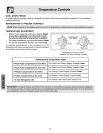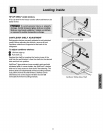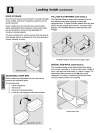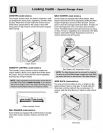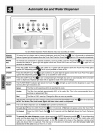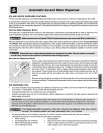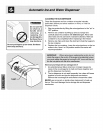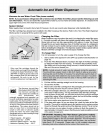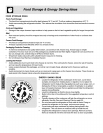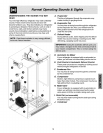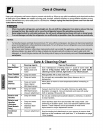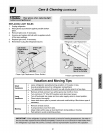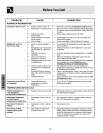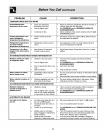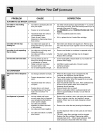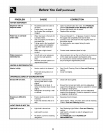
UNDERSTANDING THE SOUNDS YOU MAY
HEAR
Your new high-efficiency refrigerator may make unfamiliar
sounds. These are all normal sounds and soon will
become familiar to you. They also indicateyour refrigerator
is operating as designed. Hard surfaces, such as vinyl or
wood floors, walls, and kitchen cabinets may make
sounds more noticeable. Listed below are descriptions of
some of the most common sounds you may hear, and
what iscausing them.
A. Evaporator
The flow of refrigerant through the evaporator may
create a boiling or gurgling sound.
B. Evaporator Fan
You may hear air being forced through the refrigerator
by the evaporator fan. Also, you will feel warm air
being pushed out the front of the refrigerator from
under the Toe Grille.
C. Defrost Heater
During defrost cycles, water dripping onto the defrost
heater may cause a hissing or sizzling sound. After
defrosting, a popping sound may occur.
D. Automatic Ice Maker
If your refrigerator isequipped with an automatic ice
maker, you wilt hear ice cubes falling into the ice bin.
E. Cold Control & Automatic Defrost Control
These parts can produce a snapping or clicking sound
when turning the refrigerator on and off.
F. Condenser Fan
You may hear air being forced through the condenser
by the condenser fan.
G. Compressor
Modern, high-efficiency compressors operate much
faster than older models. The compressor may have a
high-pitched hum or pulsating sound.
H. Water Valve
If your refrigerator is equipped with an automatic ice
maker, you will hear a buzzing sound as the water
valve opens to fill the ice maker during each cycle.
L Drain Pan (not removable)
You may hear water running into the drain pan during
the defrost cycle.
J. Condenser
19



